








































































































































This framework provides an efficient option for NHS organisations to procure their utilities and a wide range of energy management services to cut energy costs and reach Net Zero goals.
What we offer:
A compliant route to market for the provision of:
Electricity and Gas Supply
Supply of Water and Wastewater
Energy Management Solutions
Quotes from multiple suppliers
Various contract options
Advice on government funding schemes
Dedicated account management support
Full transparency


For help or advice, please contact the team:




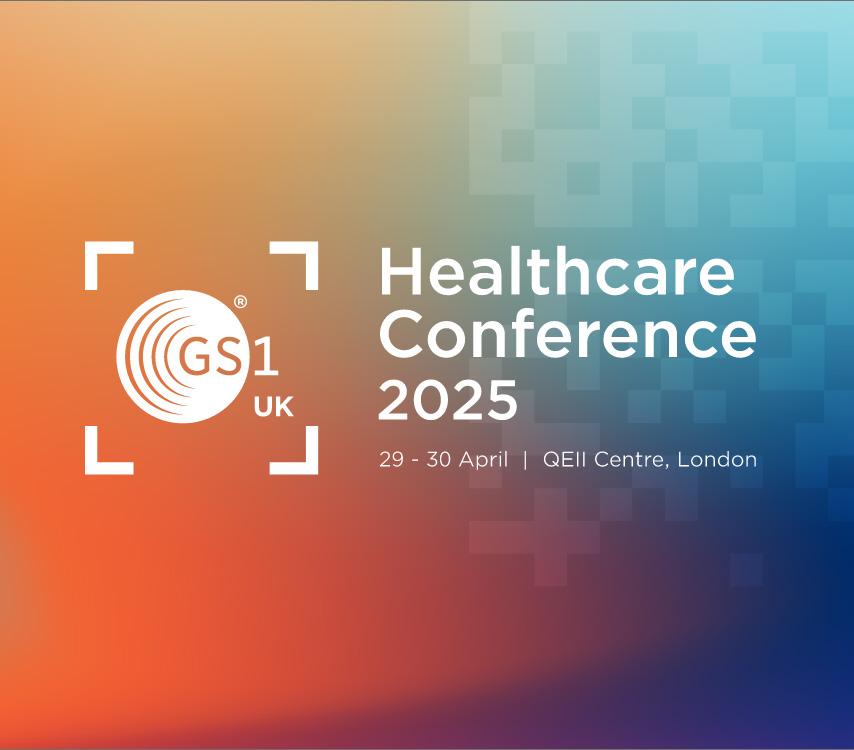






For over 120 years, innovation has been our inspiration, and product excellence our goal. Our expert knowledge, pioneering attitude and established partnership with Armitage Shanks have inspired our market-leading healthcare products. Our solutions are designed to meet the requirements of HBN 00-10 Part C, while suiting your individual budget and requirements.


Trusted by healthcare facilities in the UK and around the world for over 60 years.




Speedy installation.
All Vepps Healthcare units are pre-plumbed at our manufacturing facility, meaning on site installation times are reduced by 50%.
maintenance.
With lockable, hinged doors and panels, it’s quick and easy to access concealed duct space to complete ongoing maintenance work.
Offsite manufactured in the UK, with perfect panel and door alignment, all with a rock-solid 10 year guarantee for added peace of mind.
Healthcare compliant.
All products are HBN 00-10 Part C compliant and parts used throughout the range are WRAS listed or self-certified as compliant.
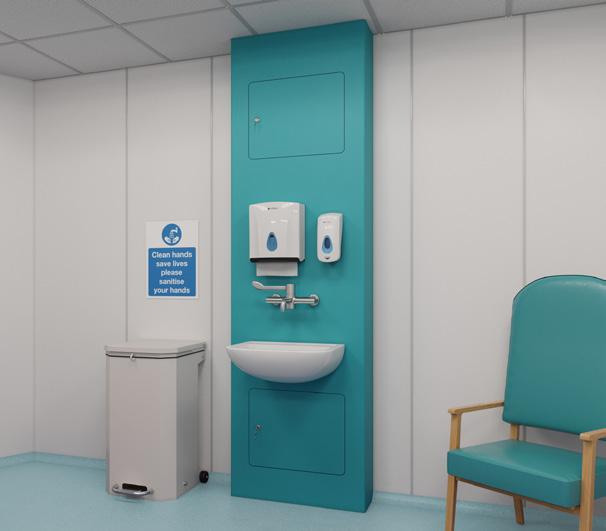
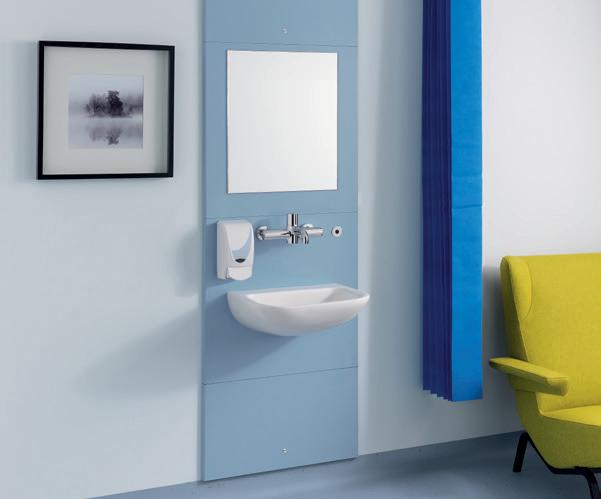

Prime minister Sir Keir Starmer has announced his plans to scrap NHS England. Set up in 2013 to increase the health service’s autonomy, NHS England functions as a quango (a quasi-NGO) which is funded by taxpayers but not controlled directly by central government.
The prime minister’s decision was announced at a speech in Hull on 13 March.
On the NHS England body, the prime minister said: “So today I’m going to reverse it because I don’t see why decisions about £200 billion of taxpayer money on something as fundamental to our security as the NHS should be taken by an arms-length, NHS England.
“And I can’t in all honesty explain to the British people why they should spend their new money on two layers of bureaucracy.
“That money could and should be spent on nurses, doctors, GP appointments. So today I can announce we’re going to cut bureaucracy across the state… I’m bringing management of the NHS back under democratic control by abolishing the arms-length body NHS England. That will put the NHS at the heart of the government where it belongs.”


GP system to receive an overhaul and funding boost
Government and GP representatives have agreed to reforming GP contracts which will modernise the system by requiring GP surgeries to allow patients to request appointments online throughout working hours from October, which will free up phonelines for those that need them. This deal was agreed on 27th February between the government and the British Medical Association (BMA).
An online patient charter is to give patients a clearer idea of the treatment they are able to receive with their GP, along with more consistent care as the government aims to bring back the family doctor. GPs will be incentivised to identify patients who would benefit most from seeing the same doctor at every appointment, so more patients will see their regular GP for each appointment.
As part of a mission to cut waiting lists, GPs will be encouraged to seek specialist advice and guidance if unsure about referring a patient to hospital, with up to £80 million funding going towards doctors being able to liaise with specialist consultants. This will make sure fewer people are unnecessarily added onto waitlists and speed up patient care.

Experience the comfort of reliable Building Energy Management Systems (BEMS) in your buildings, working consistently in the background.
Always there, balancing the complex conditions required in your office spaces, labs, or theatres.
Come to us for robust BEMS solutions that don't skip a beat.
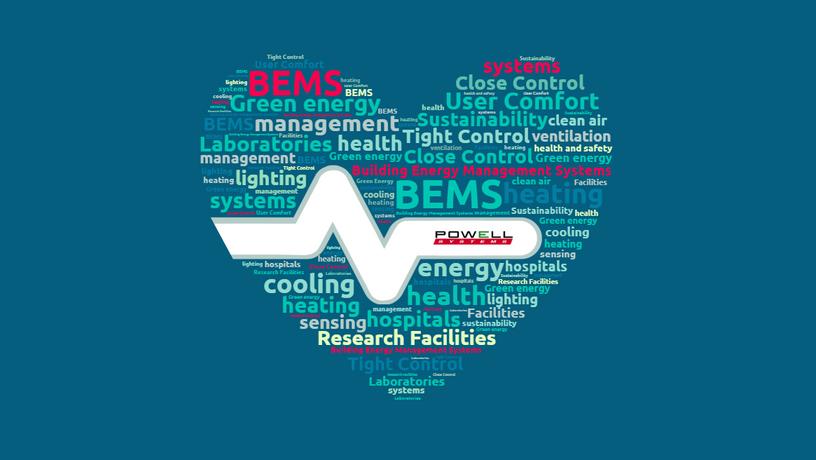



01689 879000
admin@powell-systems.co.uk

NHS England has announced the executive team, named the NHS Transformation Executive Team, who will replace the NHS England Executive Group to lead the organisation’s transition into the Department of Health and Social Care.
All colleagues took up their roles on 1st April 2025, except for the deputy chief executive officer.
The new team is to be drawn from the existing executive and wider NHS on secondment, and each member has been appointment following discussion with the secretary of state, Department of Health and Social Care senior officials, incoming chair Dr Penny Dash, and NHS England’s Board.
All appointments are subject to the approval of the Board.
The new team will no longer have a chief operating officer and a chief delivery officer. Instead, the new team will have two co-medical directors, alongside new posts – a financial reset and accountability director and elective care, cancer and diagnostics director.
Professor Stephen Powis will remain as national medical director until early July and will work alongside Meghana Pandit and Claire Fuller over the next few weeks to finalise arrangements for the medical directorate...


According to the latest annual NHS staff survey, one in seven staff (14.38 per cent) experienced physical violence from patients, relatives, or other members of the public last year.
The 2024 survey had the largest turnout in its 20-year history, with 744,358 participants. This year, the survey found that the number of NHS workers satisfied with flexible working options was at its highest level in five years (57.65 per cent).
Attacks on staff have increased by 13.88 per cent since 2023, although numbers remain below the record figures between 2020 to 2022 during and following the pandemic.
Discrimination towards staff at work has reached its highest level in five years (9.25 per cent), which is up from 8.58 per cent from the previous year. 54.09 per cent said that the discrimination they received was due to their ethnic background.
1 in 12 (8.82 per cent) NHS workers experienced unwanted sexual behaviour, including offensive comments, touching, and assault. This figure is close to the level reported in 2023 (8.79 per cent) when the question was first asked.
The NHS launched a new national sexual misconduct policy framework in October which held NHS trusts to account and implement policies allowing NHS staff to be able to report incidents of sexual misconduct anonymously...




Great British Energy’s first project will save millions on the energy bills of 200 schools and 200 hospitals, thanks to a total £200 million investment from the UK government. This plan will aim to put rooftop panels on top of these buildings.
Announced on 21 March by the energy secretary, this is the first major project for the publicly owned Great British Energy, and will immediately begin working with schools, the NHS, and devolved governments to install solar panels, build local clean power and bring down energy bills.
Across England, £80 million will support around 200 schools, and almost a £100 million will be distributed among almost 200 NHS sites. This covers a third of NHS trusts to install rooftop solar panels that could power operations, with the potential to sell leftover energy back to the grid. The first panels are expected to be in place by the end of this summer.
Recently, schools and hospitals have struggled with rocketing energy bills costing taxpayers millions of pounds, which has been driven by the UK’s reliance on fossil fuels. The NHS is the single biggest public sector energy user, with an estimated annual energy bill of £1.4 billion, which has more than doubled since 2019.
With the new solar panels from Great British Energy, the NHS could save up to £400 million over around 30 years. Each year, the average NHS site could save up to £45,000 per year on their annual energy bill if they had solar panels with complementary technologies installed such as batteries...

Boost for community pharmacies: READ MORE
Government backs technologies to help dementia patients: READ MORE
700,000 extra urgent NHS dental appointments: READ MORE
AI to revolutionise cancer care: READ MORE
£200 million for public healthcare: READ MORE
Liverpool frontline staff to share their views on the NHS: READ MORE
The Final Budget 2025-2026 has been published in the Senedd, with an extra £100 million for public services.
Social care, childcare and local councils are set to benefit from more than £100 million in extra funding.
There is £30 million more for social care to target delayed hospital discharges and provide more care and support in local communities to prevent people being admitted to hospital unnecessarily.
Cabinet secretary for finance Mark Drakeford said: “This agreement demonstrates what can be achieved when the Welsh Government and Members of the Senedd work together constructively on areas where we have common ground. The additional investment will make a real difference to communities across Wales, particularly in rural areas.
“Taken together with the extra £1.5 billion announced in our Draft Budget, this is a positive package of additional funding for every part of Wales, which will have a significant impact on our public services.”
Jane Dodds MS, leader of the Welsh Liberal Democrats, said: “This agreement is a positive step in making Wales the fairer and more prosperous country I want it to be...
For any stakeholders you want to reach get people focussed insights you can act on


Our experienced team of researchers provide the personal touch during your project, at every point, from designing the questionnaire through to presenting the findings and helping you get the insight that you can take action on





Life can be complicated, but surveys don’t need to be. Survey Solutions can help you prioritise the right questions, provide results quickly, and help you identify the areas most in need of action
For most of us, things are changing quickly at the moment. Whether the changes are around automation and AI, different perceptions on ‘woke’-ness, worries about political and economic issues, or simply the weather, there is a lot going on.
This impacts on our personal and our work lives. As employers, organisations often put in place resources to support staff in stressful situations and it’s important to keep a track on perceptions within the workplace.
While not always as trendy or innovative as some other approaches, the humble employee survey is an effective way to gauge the opinion of staff and understand if there are any issues arising that you need to deal with.
All too often though, the survey process can seem to be an awful lot of work and effort to organise.
At Survey Solutions we support employee surveys by making the process as easy as possible.
We’ll help identify and prioritise which are the right questions to ask for your organisation, work with you to get good participation and manage all the invitation and reminders throughout the survey process.
We provide access to a comprehensive suite of online reports that can quickly and easily filter and compare results.
Via our expert researchers, presentations, management commentaries, we help you identify the priorities for action and areas of success, with the team being available for 12 months to address any new queries that may come up from the results.
While great technology can make the process of survey data collection and analysis easier, at Survey Solutions we believe that it’s important to remember that at the heart of any organisation are the people who make up the workforce.
That includes everything from thinking about the people who are providing feedback, alongside the needs of organisations, and the teams that are going to use the insight and analysis to drive forward effective change.
While being asked to run a survey for your organisation isn’t always the most welcome ‘opportunity’ your boss can ask you to take on, it doesn’t have to be any more difficult than it needs to be and with a trusted, experienced partner, you can have a successful survey that delivers genuine positive change. M
+44 (0)20 8943 1445 enquiries@surveysolutions.co.uk www.surveysolutions.co.uk


Ordnance Survey is working with South Central Ambulance Service to use predictive maintenance, AI, and geospatial data to keep ambulances on the road and responding to critical incidents faster
Ordnance Survey (OS) is playing a key role in a ground-breaking trial to maximise the efficiency of ambulance fleets, tasked nationwide with the challenge of responding to the most critical incidents within an average of seven minutes. If the new trial proves successful, the potential scope of applications to other emergency services and sectors is almost limitless.
South Central Ambulance Service NHS Foundation Trust (SCAS) – operating across Berkshire, Buckinghamshire, Hampshire, and Oxfordshire – has a fleet of over 300 vehicles which are almost 99 per cent deployed at any time. Available NHS funding dictates a finite number of ambulances in the fleet, with new, fully equipped vehicles costing around £200,000 on-the-road each. Therefore the priority for the trust is to maximise the efficiency of each ambulance.
To ensure life-saving support is available, it is vital to the trust that its ambulance fleet is well maintained and reliable. SCAS has been looking at ways to maximise efficiency by minimising those times when ambulances must be taken off road for unforeseen maintenance.
Based on a methodology already seen in the aviation industry, SCAS – with the help of OS, data integration, analytics and AI company Qlik and Differentia Consulting (an elite Qlik channel partner) – is developing a predictive maintenance model for its vehicles. The model will allow the trust to efficiently schedule maintenance before a vehicle succumbs to larger, possibly long-term failures.
Each ambulance contains two telematics trackers: the engine tracker, monitoring internals such as engine temperature and clutch usage, as well as location, lights and other electricals; and the cab tracker linked to the 999-control room. SCAS then looked at building

a model to achieve new insight, which was both analytical – monitoring telemetry and the state of vehicles returning from shifts – and predictive – considering the probability of an ambulance needing servicing.
The use of data
OS has been tasked with combining this telematics data with geospatial data – more specifically the topographic and contextual data in the OS National Geographic Database – which can unlock new analytics on how road and journey characteristics could influence wear on a vehicle. SCAS first asked OS to take telematics data for the whole fleet and map journeys, observing the road types, average speeds, gradient, sinuosity (the curvature of the road), rural versus urban nature of the routes being taken.
Factors such as driving uphill can cause the engine to overheat, leading to significant strain on the engine components. Other considerations are the effects of harsh braking and acceleration on vehicles. Another question is whether there are any junctions where vehicles experience greater stress. By combining geospatial data with maintenance data, SCAS can build a predictive model to answer these questions.
James Armstrong, geospatial consultant at OS said: “Ambulance services are already dedicated users of OS geospatial data, but it’s exciting to know that applying our data to this new model has great potential to improve the efficiency of
the SCAS fleet, ultimately enhancing its ability to provide urgent care to those in need. It’s incredibly rewarding for OS to be part of this project and potentially help to apply it across other emergency service fleets longer term.”
Vivienne Parsons, Senior Management Information Analyst at SCAS said: “As well as the purchasing, conversion and equipment costs to get each ambulance on the road, it takes 12 members of staff to cover each vehicle’s weekly operational rota, all with their own associated recruitment, training and university costs. Looking for other ways to innovate and improve service delivery and patient experience has led us to consider the wealth of data we capture from our vehicles. I am really excited to see what story we will be able to tell from the data and the impact this can have.
“The help we are being offered by working collaboratively with OS, Qlik and Differentia Consulting is amazing; they are a key part of our analytical journey, providing the insight and expertise that we do not have.” L

Paul Butler,
regional sales
director at AOC and Philips Monitors, makes the case for larger monitor screens, greater sustainability, and the future of digital screens in healthcare
How are screens currently being used within the NHS, and what benefits do they bring to staff working in hospitals and other healthcare facilities?
Screens play a crucial role throughout the modern healthcare environment. Traditionally, NHS facilities have utilised screens across multiple touchpoints - from administrative functions and patient record management to diagnostic imaging and clinical assessments. Many departments have operated with dual screen configurations paired with USB docks, which, while functional, create cable management challenges and integration complexity.
We’re witnessing a significant shift toward larger, more affordable ultrawide (21:9) and superwide (32:9) solutions. A recent installation in the West Midlands highlights this evolution, where the Philips 34B2U5600C 34-inch ultrawide monitors were deployed. These displays provide sufficient desktop space for multiple applications simultaneously while featuring built-in USB/Ethernet docking and built-in KVM switch capabilities, streamlining the workspace considerably. The benefits for healthcare staff are substantial. Clinicians can view comprehensive patient data without constant windowswitching, while administrative teams benefit from improved workflow efficiency. The reduction in peripherals through integrated docking solutions means fewer connection points to troubleshoot and maintain – a crucial consideration for busy IT departments managing extensive healthcare estates.
What role do screens play in improving patient experience, from check-in to receiving important health information?
Display technology significantly enhances patient experiences throughout their healthcare journey. The implementation of ultrawide screens with single-cable connectivity enables faster, more intuitive check-in processes and patient management. Staff can process information more efficiently without needing to navigate between multiple screens or constantly scroll through data. Today’s high-resolution displays present critical health information with exceptional clarity. This eliminates the frustration of zooming in and out to read vital details - particularly important when communicating complex medical information to patients. Clear visualisation of diagnostic images, treatment plans, and educational materials improves comprehension and engagement. In waiting areas and information points, properly deployed screens can significantly reduce perceived waiting times by providing relevant health information, wayfinding assistance, and educational content. The quality of visual communication directly impacts patient understanding and satisfaction, making the investment in superior display technology an important consideration for patient-centred care initiatives.
What are some of the challenges in implementing and maintaining screen technology across NHS facilities?
One of the primary challenges lies in changing established behaviours among both users and procurement teams. Demonstrating
the efficiency and productivity benefits of newer display solutions requires persistent education and practical demonstrations within specific healthcare contexts.
Technical forums provide valuable opportunities to showcase how modern display technology addresses healthcarespecific needs. We focus on illustrating how features like integrated docking, ergonomic adjustability, and eye health protection directly benefit clinical and administrative workflows.
Implementation across large, diverse NHS estates presents logistical challenges. A coordinated deployment approach is essential, balancing immediate operational needs with long-term sustainability objectives. Ensuring compatibility with existing systems while planning for future technological integration requires careful consideration.
Maintenance considerations extend beyond basic hardware reliability to include factors like power efficiency, ergonomic adaptability for diverse staff, and built-in features that protect staff wellbeing during extended viewing periods. The total cost of ownership must account for these factors alongside initial procurement costs.
How do you see the future of digital screens evolving in healthcare, and what innovations could further support the NHS?
The monitor is increasingly becoming the central hub of the healthcare desktop environment. As more specialised technologies become available, the display serves as the integration point for the entire digital ecosystem, seamlessly connecting various devices to the broader IT infrastructure.
We anticipate significant developments in several areas: AI-enhanced webcams for improved telehealth capabilities; advanced side-access inputs for quick peripheral connections; and sophisticated daisy-chain functionality allowing multiple displays to operate from a single connection point. These innovations will create more intuitive, uncluttered workspaces that enhance both efficiency and staff satisfaction.
Sustainability will remain a central consideration, with sensor technologies like the PowerSensor or LightSensor in our monitors, which automatically adjust to usage patterns or ambient conditions. These features align with NHS Net Zero objectives while simultaneously reducing operational costs. Looking further ahead, we expect displays to incorporate more sophisticated eye protection technologies to address digital eye strain - a growing concern for healthcare

Paul Butler, regional sales director, AOC and Philips Monitors
Paul Butler has worked in the global displays industry for over 35 years, specialising in technical display solutions. For the past decade, he has led AOC and Philips Monitors in the UK/Ireland, driving innovations in LCD technology, professional gaming monitors, and USB-C docking solutions across both business and consumer applications.
professionals who spend extended periods reviewing digital information. Coupled with increasingly intuitive ergonomic design, these developments will support workforce wellbeing alongside clinical functionality. The ultimate goal is to make technology transparent - allowing healthcare professionals to focus entirely on patient care rather than managing complex systems. By continually refining how visual information is presented and integrated, display technology will play an increasingly vital role in supporting NHS service delivery. M
www.philips.co.uk/c-e/so/monitors/ professional-use.html


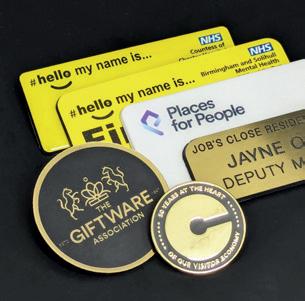






The IPACS project, a collaboration between researchers and healthcare professionals, used advanced simulation modelling to tackle this issue, offering data-driven solutions to improve patient flow and ease system pressures, explains Professor Christos Vasilakis, founding director of the Centre for Healthcare Innovation and Improvement (CHI²), academic scholar in Operational Research/Management Science at The University of Bath and a Fellow of the Operational Research Society (FORS)
Delayed discharge, commonly known as ‘bed blocking’, presents a significant and persistent challenge for the NHS. This issue arises when patients that are considered medically fit for discharge, remain hospitalised due to delays in arranging essential social care or community nursing support.
The consequences are far-reaching, severely straining the availability of acute beds and negatively impacting patient well-being.
According to NHS England data , in February 2024, there were between 13,200 and 14,200 patients remaining in hospital each day who
did not meet the criteria to stay. This represents over one in eight general and acute beds in England.
There are also concerns that the number of people delayed in hospital for more than three weeks has increased.
The IPACS Project: a collaborative solution
This issue has been prevalent for several years and to tackle it, the Improving Patient Flow between Acute, Community, and Social Care (IPACS) project was initiated in 2020. E

F This ambitious three-year initiative was funded by Health Data Research UK (HDRUK), an independent, registered charity specialising in health data research that tackles pressing healthcare issues. To deliver the project, a diverse team of experts from the University of Bath, the University of Exeter Medical School, and the Bristol, North Somerset, and South Gloucestershire (BNSSG) Integrated Care Board (ICB) came together.
The team’s mission was to develop an opensource computer simulation model to analyse patient flow complexities, offering a potential solution for healthcare organisations facing similar challenges with delayed discharges. Utilising Operational Research (OR) techniques, which involve applying analytical models to solve complex problems, the team sought to address the intricate factors contributing to these delays. Several team members were highly experienced in OR and affiliated with the Operational Research Society, a professional body dedicated to advancing the field. This project demonstrated the application of OR methodologies to improve healthcare efficiency.
The strength of the IPACS project lay in its multidisciplinary team. Dr. Richard Wood and Dr. Paul Forte from NHS BNSSG ICB provided invaluable on-the-ground healthcare expertise and direct access to decision-makers, ensuring the model’s relevance to real-world challenges. Professor Christos Vasilakis, founding director of the Centre for Healthcare Innovation and Improvement (CHI2), and Dr. Zehra Onen Dumlu
at the University of Bath, worked in close collaboration with Professor Martin Pitt and Dr. Alison Harper from the University of Exeter Medical School. Together, they undertook the complex task of modelling, developing, and implementing the simulation framework, bringing academic rigor and practical insight to the project.
A key focus of the IPACS project was the seamless transition of patients from acute care to community care, particularly through the ‘Discharge to Assess’ (D2A) service. This service, designed to facilitate efficient patient flow out of acute hospitals, uses three distinct pathways: The first is Pathway 1 (P1), which focuses on enabling patients to return home with domiciliary visits, promoting independence in familiar surroundings.
Pathway 2 (P2) provides bed-based rehabilitation for patients requiring more intensive support, aiding recovery, and preventing readmissions. Pathway 3 (P3) involves complex care assessments, often leading to care home placements, ensuring appropriate long-term care for vulnerable individuals.
The IPACS project aimed to optimise capacity allocation across these critical pathways.
The Bristol, North Somerset, and South Gloucestershire (BNSSG) region, serving a population of approximately one million, provided a real-world laboratory for the

IPACS project. Its diverse demographic mix, encompassing the urban landscape of Bristol, rural North Somerset, and South Gloucestershire, mirrored many of the challenges faced across the UK. The region’s D2A pathways were under immense pressure, with near-full occupancy and significant discharge delays, highlighting the urgent need for innovative solutions and providing invaluable real-world data for the model.
Professor Vasilakis and Dr Wood identified the core challenge as the complex interplay between acute, community, and social care services.
Delays in community and social care provision create bottlenecks that ripple through the entire care system, impacting emergency department overcrowding and ambulance delays. The team began by gathering real-time data on patient occupancy and discharge delays, establishing a baseline and generating “what if” scenarios by varying lengths of stay and arrival rates.
Central to the IPACS project was the use of computer simulation modelling, a powerful Operational Research technique.
This approach allowed the team to simulate patient flow through D2A pathways, capturing the intricacies of each stage; testing various intervention scenarios to evaluate their impact; optimising resource allocation to reduce discharge delays; and analysing time-varying demand to account for fluctuations in patient needs. The model incorporated time-varying demand, capacity constraints, and statistical distributions, using the open-source ‘R’ programming language for accessibility and transparency.
The model’s outputs highlighted the significant impact of strategic changes, particularly achieving target pathway splits and lengths of
Future research could expand the model to include social care
stay. Notably, model estimates were used to support a £13 million business case for local D2A system development, demonstrating the project’s real-world influence.
While IPACS provides a powerful tool, the team acknowledged its limitations. The model does not encompass all discharge aspects, such as specific social care inputs, palliative care pathways, or post-D2A placements.
Data completeness also poses challenges. Future research could expand the model to include social care, examine the impact of acute blockages, optimise home-based care, and develop less computationally intensive analytical solutions.
As recent data has evidenced, delayed discharge remains a significant issue today. However, the IPACS project represents a big step towards addressing this persistent crisis. By providing a data-driven approach to optimise patient discharge pathways, the team demonstrated the transformative power of Operational Research in healthcare delivery. Through careful analysis and simulation, a more efficient and compassionate healthcare system can be created, ensuring patients receive timely care and restoring dignity. L

INSTRUMENT-LEVEL TRACEABILITY MADE
EFFORTLESS & RELIABLE




On 29–30 April, the GS1 UK Healthcare Conference will return. Taking place at the QEII Centre in London, the one-of-a-kind event combines two significant drivers in healthcare – patient safety and digital transformation

As the event brings these themes to life, the agenda will reflect on the role of data and digital in equipping the NHS to deliver the government’s top three priorities for NHS reform – the shift from analogue to digital, transitioning from curing to preventing illnesses, and moving care from hospitals into the community.
This seventh edition of the conference will focus on how the NHS can harness data and technology to shape the future of healthcare, one barcode scan at a time. Hospitals across the UK that are already doing so are reaping the benefits of greater operational efficiencies, reduced unwarranted clinical variation and, most importantly, improved patient safety.
The transformative results are evidenced in the Scan4Safety report. Results gathered from the initial 2016 Department of Health and Social Care’s programme, which started across six trusts in England, saw 140,000 clinical hours released back to frontline care, £5M in recurrent inventory savings and £9M in non-recurrent inventory savings.
Fast-forward to 2025, and not only has significant progress been made with adopting Scan4Safety in England but national programmes are now being embedded across Scotland and Wales.
The conference will see more than 50 leading healthcare visionaries will take to the stage to highlight the importance of GS1 standards and Scan4Safety in driving safer, smarter, connected healthcare for the future. Notable speakers include Dr. Henrietta Hughes OBE, England’s patient safety commissioner; Sir Julian Hartley, CEO of the Care Quality Commission; Ming Tang, chief data and analytics officer for NHS England; Andy Malyon, national clinical lead – scan for safety, Scottish Government; and Mike Emery, chief digital and innovation officer (Health and Social Care) NHS Wales/Welsh Government.
Across the two days, the 400+ strong audience of policy makers, healthcare providers, manufacturers, suppliers, and industry solution providers will come together to share ideas and best practice strategies to advance the future of healthcare. M
Find out more here.


The UK’s most significant procurement overhaul in a decade has now come into effect, reshaping the supply of goods, nonhealthcare services and works to healthcare bodies. Jan Cumming, legal director, and Viney Jhalley, associate, at UK and Ireland law firm Browne Jacobson, explain the substantial changes in the Procurement Act 2023 for NHS trusts, independent providers and their suppliers

The Procurement Act 2023 – which came into force on 24 February this year, some 16 months after receiving royal assent – marks a decisive break from EU-derived regulations.
The legislation establishes a unified framework encompassing public contracts, utilities, concessions and defence procurement across England, Wales and Northern Ireland, aiming to enhance efficiency, transparency and accountability.
The Act represents a fundamental shift in procurement objectives, moving beyond the traditional focus on equal treatment and nondiscrimination. Instead, contracting authorities are now mandated to deliver value for money, maximise public benefit and act with integrity throughout the procurement process.
They must also consider how procurement can increase participation from SMEs and support broader social, economic and environmental objectives.
For healthcare organisations, this requires a recalibration of procurement strategies to balance cost-effectiveness with these wider considerations.
Statement: a strategic framework
To guide implementation of the Act, the government has published the National Procurement Policy Statement (NPPS), outlining strategic priorities for public procurement. Healthcare organisations must have regard to the NPPS and will need to demonstrate this consideration during procurement exercises.
The NPPS establishes several key priorities that directly affect healthcare procurement:
Healthcare organisations are expected to create opportunities for small businesses and social enterprises while supporting high-quality employment with fair wages. The focus on fostering innovation and emerging technologies aligns with the NHS’s drive to embrace digital transformation and innovative healthcare solutions.
A central focus is how goods and services procured by public bodies can support the acceleration towards net zero. Healthcare organisations must prioritise green technologies and implement rigorous environmental standards in their procurement activities, contributing to the nation’s ambition to become a clean energy leader. This is particularly relevant as the NHS works towards its commitment to reach net zero carbon emissions.
The NPPS emphasises strengthening community cohesion through procurement practices. Healthcare organisations should structure their procurement to facilitate employment opportunities for disadvantaged groups, supporting safer and more inclusive communities. This aligns with the NHS’s focus on addressing health inequalities and promoting inclusive healthcare delivery.
The statement explicitly recognises the role of procurement in supporting physical and mental wellbeing through high-quality employment. Healthcare organisations must consider the health impacts of their procurement decisions on both E

F their workforce and the broader community, reinforcing the connection between employment practices and public health outcomes.
The government has updated the Sourcing Playbook alongside the NPPS, introducing a new public interest test to enhance procurement effectiveness and value for money. Healthcare organisations must carefully evaluate whether services should be outsourced or delivered in-house, ensuring optimal use of public resources.
The framework places increased emphasis on supporting small and medium-sized enterprises (SMEs) and voluntary, community and social enterprises (VCSEs) while building robust commercial capabilities, particularly in contract management.
Healthcare organisations must navigate the complex interplay between the Procurement Act and the Provider Selection Regime (PSR) –which came into force in England on 1 January 2024 as part of the Health Services (Provider Selection Regime) Regulations 2023 and in Wales on 24 February 2025 via the Health Services (Provider Selection Regime) (Wales) Regulations 2025.
The PSR covers the procurement of healthcare services, aiming to give relevant healthcare authorities greater flexibility by streamlining the competitive tendering process.
However, the PSR does not apply to goods or non-healthcare services, such as electronic or technology services, medicines, medical equipment and social care, unless they are part of a mixed procurement. These goods and services fall under the regular procurement regime established by the Procurement Act. When planning a procurement strategy, healthcare bodies need to determine whether the solution to be procured is purely a healthcare service or not. This classification is crucial as it determines which procurement regime applies.
Transparency requirements have been substantially enhanced under the Procurement Act

For mixed procurements involving both healthcare services and non-healthcare services, such as technology services or social care services, the PSR may apply if two criteria are met: the main subject matter of the contract is in-scope healthcare services and the authority believes the other goods or services could not reasonably be supplied under a separate contract.
One approach to determine whether the main subject matter is “in-scope” is to assess value. If the healthcare services component is higher in value than the non-healthcare goods or services, and one cannot be provided without the other under the same contract, then the PSR could apply.
Enhanced transparency and reporting
Transparency requirements have been substantially enhanced under the Procurement Act. For contracts exceeding £5m in England, there’s a new obligation to publish at least three key performance indicators (KPIs) and regularly assess supplier performance against these metrics.
Healthcare organisations will need to adapt to new requirements for publishing procurement documentation and contract performance data. Mandatory disclosure requirements for contract changes and modifications, along with increased emphasis on supply chain transparency throughout the procurement process, will create additional administrative responsibilities.
It also provides a real opportunity for healthcare organisations and their supply chains to drive efficiency, innovation and value for money
Supplier performance should also be regularly assessed against these benchmarks and those that perform badly – as well as those whose associated suppliers and subcontractors are not up to standard – may be placed on a central debarment list.
This makes them excludable on a discretionary ground from future public tenders and can lead to the termination of other public contracts.
For suppliers to healthcare organisations, the Act creates significant opportunities while introducing new compliance requirements. Market access should be simplified through reduced administrative requirements and improved visibility of opportunities.
A new competitive flexible procedure – part of a simplification that moves from seven procurement procedures to three – enables more innovation within a procurement exercise. This increases the opportunity for dialogue with buyers. Suppliers will have greater scope to demonstrate value beyond price considerations, which is particularly relevant for complex healthcare solutions.
The threat of being placed on a central debarment list means suppliers must ensure they can realistically meet KPIs, conduct due diligence on their corporate structure and those of supply chains to ensure compliance, and take advantage of feedback that contracting authorities are mandated to provide in order to challenge decisions.
Health technology suppliers should prioritise understanding how their offerings are classified under the new regime, reviewing marketing materials and standard contracts for compliance under the new regulatory framework.
Those providing mixed solutions that combine healthcare services with technology components need to be particularly attentive to how their services are categorised, as this will determine which procurement regime applies.
With a new procurement regime now in force, healthcare organisations should take several key steps: develop procurement strategies that align with the national priorities outlined in the NPPS; embed social value considerations into decision-making processes; and support local economic growth through engagement with SMEs. They should prioritise environmental sustainability in procurement practices; build internal capabilities for effective procurement management; review and update internal processes to align with the new procedures. They should also prepare for registration on new digital platforms; develop enhanced reporting capabilities to meet transparency requirements; update document management systems to handle new requirements; and provide comprehensive training to procurement staff on the new procedures and digital platform usage.
The new procurement regime may bring short-term disruption, but it also provides a real opportunity for healthcare organisations and their supply chains to drive efficiency, innovation and value for money. To maximise benefits, everyone involved should familiarise itself with the Act and accompanying guidance. L

Crown Commercial Service details how securely exchanging data and information is at the forefront of their mission for public sector organisations

In this article, Andrea Fitzgerald, regional head of business development at Crown Commercial Service (CCS), explains how health authorities can take advantage of CCS’s interoperable procurement frameworks to reduce technology integration costs, eliminate data silos, enhance cross-department collaboration, and deliver more efficient, connected healthcare services that provide better value for money.
The NHS’s digital transformation journey has reached a critical junction, with interoperability emerging as the cornerstone of efficient healthcare delivery. As the NHS spends billions annually on technology and digital services and with stretched budgets, the need for seamless data exchange between systems has never been more crucial.
The interoperability challenge
“Interoperability, the ability to securely exchange data and information regardless of the organisations and technology involved, is the key enabler that underpins all six missions of the Transforming for a Digital Future Digital
and Data Strategy and supports several government cross-cutting priorities, including Health (Integrated Care), Security, and Net Zero,” explains Andrea Fitzgerald.
All public sector organisations must address interoperability issues and challenges to ensure future sustainability, efficiency, and effective delivery of secure online public services. “However, this isn’t just about technology; it’s about enabling better patient care, supporting integrated health services, and meeting our net zero commitments,” notes Fitzgerald.
The current landscape presents several challenges. Public sector organisations, including NHS trusts, often operate with disparate systems that struggle to communicate effectively. Research conducted by CCS has identified several key barriers: limited understanding of interoperability requirements among decision-makers; lack of place-based strategies for technology procurement; legacy systems still in use create ongoing problems and extra work that build up over time, making it harder to update or fix issues; and individual organisations have less ability to convince vendors to include interoperability features that allow their systems to work well with other systems.
As the UK’s largest public procurement organisation, CCS has taken significant steps to address these challenges through innovative procurement strategies that prioritise interoperability in healthcare technology.
Over the past 18 months, CCS has partnered with the Government and Industry Interoperability Group (GIIG) and Cabinet Office Policy Teams to design, develop, and draft standard “boilerplate” clauses for built and digitally built environments. They have also secured funding to undertake a customer/supplier discovery to discover the barriers and opportunities in delivering public sector interoperability.
The initiative’s core goal is to establish consistent Cabinet Office-approved standards to ensure that different systems and organisations within the public sector can seamlessly exchange data and information, regardless of the host technology.
By creating these standard clauses, CCS is making it easier for public sector organisations to use the same contract language, which helps systems work together better and reduces technical complications when sharing data between healthcare systems.
Understanding that successful implementation requires more than just technical solutions, CCS has initiated several support mechanisms: an Interoperability Awareness Programme for buyers and managers; a comprehensive glossary (dubbed the “Jargon Buster”) to ensure consistent understanding; a repository of relevant government policy drivers and guidance; and enhanced buying power through CCS supply chains.
Implementation of these interoperability standards through procurement offers several significant benefits for NHS organisations: improved collaboration between healthcare providers; enhanced efficiency in service delivery; strengthened resilience through standardised systems; reduced costs through better procurement practices; and seamless data sharing capabilities.
In practice, breaking down interoperability barriers means a patient’s electronic health record can be securely accessed across different NHS trusts, allowing specialists to view complete medical histories without duplication or delay. For example, when a patient is transferred from a local hospital to a specialist centre, interoperability ensures that critical test results, medication records, and treatment plans follow them seamlessly, eliminating dangerous information gaps and redundant procedures.
This kind of interoperability improves safety and efficiency, allows staff to focus on care, and gives patients a better experience.
“Using procurement as a catalyst to deliver interoperability is innovative, enabling our customers to collaborate to provide integrated services for UK citizens,” Andrea notes.
Over time, the public sector will become interoperable by default through agreed-upon use of standard clauses in the procurement process. This transformation will be particularly significant for NHS trusts, enabling them to: share patient data securely across different systems; integrate new technologies more effectively; reduce duplicate data entry and associated errors; and improve patient care through better information sharing.
Success of this initiative relies on collective action. As CCS emphasises, interoperability is not the responsibility of a single group or sector. Instead, it requires coordinated effort across all public sector organisations, suppliers, and stakeholders.
“By collaborating with our public sector partners and supplier marketplace, we have a genuine opportunity to define and agree on common data standards. This will enable us to implement an interoperable infrastructure across the public sector,” explains Andrea.
Interoperability through procurement represents a fundamental shift in how the NHS approaches technology acquisition and implementation. By embedding these requirements at the procurement stage, CCS is helping to ensure that future NHS systems will be better integrated, more efficient, and ultimately better suited to deliver modern healthcare services. M
Learn about our commercial solutions to maximise your health estate by visiting our health webpage and viewing our digital brochure.

Cornerstone Management Services Ltd is introducing a new platform designed to facilitate the sharing of valuable knowledge and expertise. The platform aims to provide timely and effective solutions for addressing reported issues such as damp, condensation and mould

With a demonstrable circa 6000 damp and mould related independent surveys to date, Cornerstone Management Services Ltd is launching a new platform aimed at sharing knowledge for timely solutions of reported damp, condensation and mould in our buildings.
Having witnessed repeat problems for a host of clients, Cornerstone are of the opinion a defined uniform framework is a key deliverable to uphold tailored approaches to such reported problems. Why? Because our experience embraces a significant number of intended best practice installations and remediations that have actually served to impair the outcome.
We fully recognise the expertise delivered by all trades however, there appears to be a missing element when determining the ‘impact’ of an intended improvement on other structural aspects that have shown to not fully resolve the reported problem.
And, with a recognisable drive seeking to insulate our leaky buildings and improve the Net Zero journey, if we sought to implement such recognised aspects in our buildings today ahead of a defined understanding of the structure, its current installed atmospheric management and occupancy levels, the problems could significantly escalate.
Thinking differently about your strategy for achieving improved healthier buildings, requires bespoke knowledge and guidance for all and can be achieved instantly in the timely Property Health App with onboard SMART Knowledge for long-term better decision making within a proactive uniform guidance framework.
Our experience, findings and technology have been embraced in this unique App giving everyone immediate access to likely causes of damp, condensation and mould alongside recognisable recommendations for reducing the likelihood for repeated issues alongside its effective removal.
Whether it’s a classroom, hospital ward, office or bedroom, the knowledge aligns to all room types and deals with mould recognising it is a ‘symptom’ with associated credible solutions to underpin confidence via a ‘did you know’ approach.
Damp and mould have a number of root causes hence, a singular improvement has not always been successful and, a ‘reset’ approach is a key consideration for these annual ongoing problems.
Contact us now to learn more of this unique process and instigate your interest for a complimentary user period to learn of its functionality prior to any commitment. M
Tel: 0344 846 0955
Email: info@cornerstone-ltd.co.uk www.propertyhealth.co.uk

Paul Bullard, product director at SFG20, the industry standard for building maintenance specification, shares his insights on how effective contract management can save public sector businesses significant time and money, and overcome the most common obstacles

Managing maintenance contracts in the public sector is a challenging, but ultimately, necessary task. The consequences of poor contract management go beyond inefficiency; they directly impact safety, compliance, and financial performance. By adopting effective strategies, public sector organisations can save significant time and get the best value for money, while ensuring that buildings are wellmaintained and legally compliant.
Common challenges the facilities management industry is facing Facilities management professionals, building owners and public sector workers face numerous challenges that can easily derail E
www.ecogrit.co.uk



F efficient operations. From dealing with complex building legislation, to navigating the tendering process and maintaining a golden thread of information, these challenges require careful planning and execution.
The legislative landscape in the facilities management industry is constantly evolving. Staying up-to-date with building regulations requires time, expertise, and the ability to quickly integrate new legislation into existing maintenance plans. For public sector organisations, failing to comply can result in significant legal and financial consequences. Allocating resources to ensure compliance is not optional, but a central part of effective and responsible maintenance management.
Tendering for maintenance services can be a frustrating experience for both clients and service providers. For facility managers, creating a precise specification of works is challenging and service providers may be unsure if their proposal can be compared like-for-like with competitors’ tender submissions. At the same time, service providers may remain unsure if their proposal matches up to competitors’ work. This imbalance and uncertainty can lead to inefficiencies and undesired outcomes that don’t fully meet a building’s needs.
When changing maintenance providers, critical building information is often lost. Without a proper building handover process, new providers may need to map out the estate as if it were completely new, wasting valuable time and resources. This inefficiency is further compounded by the “golden thread” requirement outlined in the Building Safety Act 2022, which makes comprehensive, up-to-date records of building information mandatory. Ensuring continuity of data during transitions is now not just efficient, but a legal necessity.
Effective contract management begins with identifying and mitigating risks. Public sector companies must make sure that statutory tasks are completed before addressing any nonessential maintenance work. Taking advantage of tools like colour-coded task prioritisation systems, can help facilities managers distinguish between statutory, business critical, and discretionary tasks, enabling them to allocate resources effectively.
Risk assessments are also essential for minimising potential disruptions. For nonstatutory tasks, organisations should focus on assets critical to operations, while deprioritising
those with limited impact in case of failure. This approach not only reduces risks but also ensures that resources are used where they are needed most.
When running a tender for the provision of FM services, it can be a challenging time for clients to ensure they get what they need and what they are paying for. The key is being able to clearly articulate your requirement via a scope of work or a performance specification. When a contracting party communicates this in readily accepted, industry-standard language, it can prevent misinterpretation and reduce the risk of not receiving the expected benefits from the project. This creates a more efficient process by removing time a service provider spends on creating their own maintenance regimes and ensures a clear comparison between what is being offered.
The golden thread of information is critical for building safety and compliance, now outlined in the Building Safety Act 2022. Daily checks and routine maintenance must be documented meticulously to ensure accountability. Mobile solutions can simplify this process by enabling real-time recording of completed tasks. For example, daily checks on equipment like forklifts or HGVs can be logged directly into an FM system, creating a reliable audit trail.
For less frequent tasks, such as scaffolding inspections or machinery checks, digital tools can help ensure compliance with prescribed intervals. By maintaining detailed records, organisations can demonstrate adherence to safety standards and minimise legal risks.
On top of maintaining an in-depth log of all maintenance tasks completed and scheduled, FM professionals must ensure that this E





F information flows efficiently between all stakeholders. Integrating FM systems further enhances overall efficiency and reduces delays by providing a central source for information on maintenance tasks.
A successful handover relies on the smooth transfer of building information. Typically, construction teams provide asset registers and operation and maintenance (O&M) manuals, which form the foundation for maintenance regimes. At the end of a contract, retaining detailed records – including audit trails, and maintenance history – prevents duplication of work and ensures a smooth transition. This continuity not only saves time and money but also supports compliance with the golden thread requirements. For public sector organisations, maintaining this digital record ensures a smooth handover and continued operational efficiency.
Managing maintenance contracts effectively is no small feat, but the rewards for a business are significant. Tedious tendering processes, vague contracts and the loss of building maintenance information upon completion can all cause significant disruption and confusion for both Building Owners and Service Providers. Taking advantage of SFG20’s software, Facilities-iQ, FM professionals can create precise maintenance regimes, ensure statutory compliance, and significantly simplify the tendering process.
At the end of a contract, retaining detailed records prevents duplication of work and ensures a smooth transition
Through its unique Maintenance Regime feature, Facilities-iQ enables both parties to draw up and access a precise specification to base a tender on, including clear KPIs. Users are automatically notified of updates to the standard and can choose when to apply them to their maintenance regime, providing the flexibility to quickly and easily adjust specifications to align with evolving legislation. With each schedule update, users can compare changes side by side and decide when to implement them. These updates then seamlessly integrate into FM systems via the freely available API, saving significant time. L
About SFG20:
Launched in 1990 by the Building Engineering Services Association (BESA), SFG20 is recognised as the industry standard for building maintenance specification. With access to a library of over 2000 maintenance schedules that are updated dynamically to reflect changes in legislation and regulations, you can create customised maintenance schedules that are designed to keep you compliant while also saving you time, effort and money.


Kelsey Hargreaves, technical manager at BICSc explores the urgent need to professionalise cleaning in healthcare, highlighting the unsung heroes who protect patients daily and calling for the respect and recognition they deserve
I’ve walked and cleaned the halls of hospitals at all hours – during the 9am rush when patients and visitors flood in, and in the quiet hours of the night when only the beeping monitors remind you that life is still going on around you. Before I worked in hospitals, I too was guilty of not realising the impact that all tenets of a healthcare environment have on the safety of patients. However, I can certainly tell you, pre-pandemic, during the pandemic and postpandemic, there are so many workers involved in a hospital that do not get the recognition that they deserve. The guys that fix the medical
machines, the heroes that take patients from their beds to their scans, the receptionists that console, direct, and help in the same cheery manner every day. But one group of people, wrongly disrespected more than any other foundation of a healthcare establishment, “the cleaners”, are so much more central to our safety than we might give them credit for.
For too long, the role of cleaning in healthcare has been underestimated, undervalued, and overlooked. In 2020, cleaning had its brief moment of praise where people began to recognise their amazing operatives, but post-

pandemic, we seem to have forgotten how to say thank you to these heroes. It’s scary really, that a worldwide pandemic has to happen for us to realise the value of a clean environment, when the reality is, outbreaks happen in healthcare environments, schools, shops and businesses every day, yet we don’t seem to understand or in fact respect the people that have the power to prevent this most. So I don’t deviate too much from healthcare cleaning, let’s talk about the topical battle the world is dealing with: healthcare-associated infections (HAIs). HAIs are often referred to as hospitalacquired infections, and that’s exactly what they are, infections that could have been transferred through medical or surgical treatment or from being in contact within a healthcare environment. We place a lot of importance on lifesaving medical staff that treat us properly and ensure we don’t come into contact with contaminated medical equipment and devices, yet we disrespect the people and processes responsible for ensuring we are treated in a non-contaminated healthcare environment. We need to start seeing cleaning for what it really is – a crucial part of the patient care cycle, as vital as any medical treatment. The Royal Society for Public Health (RSPH) has called for healthcare cleaning to be treated with the professional respect it deserves, and it’s time we all listened.
HAIs affect thousands of patients each year, prolonging hospital stays, increasing costs, and, in the worst cases, costing lives
HAIs affect thousands of patients each year, prolonging hospital stays, increasing costs, and, in the worst cases, costing lives. According to Public Health England, around 300,000 patients in the UK acquire an HAI every year, with conditions such as pneumonia, urinary tract infections, and surgical site infections being the most common. The simple act of cleaning – when done effectively and professionally – is one of the most powerful tools we have to stop these infections in their tracks. When we think about preventing infection, we often picture doctors prescribing antibiotics, surgeons using sterile techniques, and nurses administering vaccinations. But what about the person disinfecting a patient’s bedside table? Or the operative ensuring that a high-touch surface like a door handle is free from harmful pathogens? Is their work not critical in breaking the chain of infection?
The need for professionalism in healthcare cleaning
The RSPH has highlighted the urgent need to professionalise healthcare cleaning. This means moving away from the outdated notion that it’s an unskilled task and recognising it as a technical role that requires knowledge, training, and expertise.
For years, I have worked alongside dedicated cleaning teams in hospitals. I’ve seen firsthand how a lack of training can lead to critical mistakes – using the same mop head in multiple rooms, inadvertently spreading infection rather than containing it. This wasn’t due to negligence but rather a lack of understanding of crosscontamination risks. I have also seen firsthand how training operatives, nurses and doctors in the science behind cleaning, through the use of the products and equipment they use, the pattern they clean and the legislation and standard they need to follow can prevent cross-contamination and thus outbreaks. We educate medical staff, so why wouldn’t we educate our cleaning teams? It is not just about ‘making the floors shine’, it’s about the impact their work has on the safety of patients. E

One of the biggest barriers to professionalising healthcare cleaning is the ingrained belief that it is somehow less important than medical treatment. This perception is not only unfair –it’s dangerous.
Imagine if we treated infection control nurses with the same disregard that we often show to cleaning operatives. It would seem absurd, right? Yet, both roles are essential in stopping infections from spreading. The idea that cleaning is menial or secondary is a deeply flawed mindset that puts patients and the public at risk.
In a world where antibiotic resistance is a growing threat, prevention is more critical than ever. We can’t afford to downplay the role of cleaning when it’s one of the most effective ways to stop infections before they even begin. Every surface cleaned properly is a potential infection prevented. Every contaminated area left unchecked is a risk waiting to happen.
Healthcare is often described as a cycle –assessment, diagnosis, treatment, and recovery. But there’s a vital step missing from that cycle: environmental hygiene. If a hospital isn’t properly cleaned, all the treatments in the world can be undone by a single contaminated surface.
The idea that cleaning is menial or secondary is a deeply flawed mindset that puts patients and the public at risk
Consider a patient recovering from surgery. They receive the best care – expert surgeons, cutting-edge treatments, and a dedicated nursing team. But if their environment isn’t clean, they’re at risk of post-operative infections that could undo all that hard work. A missed spot on a bed rail, an improperly sanitised medical instrument, or a contaminated bathroom can be the difference between a smooth recovery and a prolonged hospital stay.
So, what needs to change? First and foremost, healthcare cleaning must be recognised as a professional discipline. This means mandatory training, national standards, and better career progression for those in the field.
Organisations like us at BICSc have already set the groundwork with structured training programs, but adoption across all healthcare settings is still inconsistent. Some hospitals prioritise professional cleaning, while others see it as an area where budgets can be cut. This inconsistency puts lives at risk.
We also need to challenge outdated attitudes towards cleaning staff. They are not “just cleaners” – they are infection control specialists, frontline defenders against HAIs, and an integral part of the healthcare team. Their contributions should be acknowledged, their training should be funded, and their work should be valued just as much as any medical procedure.
It’s time for a cultural shift in how we view cleaning, not just cleaning in healthcare. The RSPH’s call to professionalise cleaning is not just about fairness; it’s about public health and safety. We need investment in training, recognition of cleaning as a critical, and a widespread understanding that a well-cleaned environment is a safer environment.
Next time you walk through a hospital, take a moment to notice the people making sure it stays clean. They are not just mopping floors or wiping surfaces; they are actively preventing infections, protecting the public, and playing a crucial role in the lifesaving cycle of healthcare.
It’s time we gave all cleaning operatives the respect – and the professional status –they deserve. Because to deem their work as anything less than lifesaving is not just unfair. It’s completely warped. L
FURTHER INFORMATION
www.bics.org.uk

Healthcare cleaning must be recognised as a professional discipline

As we enter spring and summer and increasing temperatures, the risk emerges of increased cold-water temperatures across water systems

What is this risk?
The ACoP L8 (Para. 59) highlights the importance of avoiding growth temperatures of between 20 and 45°C. While water authorities are required to supply “wholesome” water to sites that does not mean bacteria/pathogen free.
When the warm weather arrives the ground heats up, as does water supplied via the mains distribution network. The HSE Guidance (Paragraph 2.6) notes that cold-water systems should be maintained, where possible, below 20°C. But what can we do if the supply is above that temperature?
The simple step is reviewing the risk. If you have an incoming supply of 21°C then your risk is increased. If you have any type of Cold-Water Storage Tank (CWST) then your risk is increased further and you need to look at options to mitigate this risk.
Is there any industry guidance out there for support?
The good news is there is guidance out there. The Health & Safety Guidance (HSG) 274 for hot and cold-water systems (Part Two) provides this guidance, in Table 2.1, outlining some good practice to follow for managing coldwater systems.
The HSE publish the HSG 274 Part Two Guidance and it’s free to download.
What does the guidance suggest?
For CWSTs the advice is to check the temperature at least annually and to focus on this in the summer months. HSG 274 Part Two (Fig 2.12) also has some handy comparable images to help understand if your tank may need a clean; again, this can help mitigate the risk posed by increased water temperatures. For systems without tanks the guidance is to check your nearest and furthest outlets from supply monthly and see if the outlet is achieving <20°C within two minutes. If it’s taking longer in the summer to do this than in the winter months the chances are that you need to invest in some thermal insulation for your water pipes; installing this should help reduce ambient heat gain on your cold to give increased compliance; which reduces the risk of Legionella contamination.
If you would like support with any of the above matters, then HC Legionella Ltd can help; from tank inspections and cleans through to system temperature profiling the team works with a range of entities to support management of issues through to resolution. M
FURTHER INFORMATION
www.hclegionella.co.uk


Water coolers can support hydration in healthcare settings, but they also pose risks related to water hygiene and infection control. In this article, Peter Gunn, senior consultant, Water Hygiene Centre explores key considerations, potential hazards, and best practices for their safe management

Despite Summer seeming a very long way off post the Christmas period, the need for adequate hydration indoors remains necessary for all throughout the year.
Drinking water & Legionella
There continue to be regular requests for additional drinking water facilities to help staff, patients and visitors remain comfortable and hydrated within healthcare environments. However, water coolers and other point-of-use water outlets as we know, can cause problems in terms of bacterial growth and certain essential precautions are required.
This article focuses on mains-fed water coolers, as bottle-fed systems are not generally recommended within healthcare environments. E
Determine what the organisational policy is for water coolers
F Is there a problem with your drinking water?
Point-of-use water coolers and other drinks dispensers are commonly a ‘nice to have’ item that may improve the local environment for building users. However, there are potential drawbacks associated with water hygiene and infection control
In many cases, water cooler provision may not even be necessary, when local building/ department kitchens invariably tend to have a mains cold water tap fitted.
What are some of the problems associated with water coolers?
Resource implications – they are not ‘fit and forget’ items! In addition to the initial purchase cost, they require daily cleaning, emptying of drip trays etc., regular servicing and replacement and disposal of consumables. Infection risk – some areas are not suitable for water coolers, due to the risk of crosscontamination (e.g. laboratories and toilets) and increased risk of infection (e.g. neonatal and intensive care units). Infection Control teams should be consulted before the procurement of any such water cooler.
A detailed site survey should be carried out in advance of each installation to establish the precise location and practical requirements
Poor water quality – installation may be influenced by the provision of lack of a suitable water supply and if adequate drainage arrangements are available. Units should also ideally be sited where they are likely to receive frequent use, ensuring a regular flow of water through the device and associated pipework. Infrequent use is a common cause of unsatisfactory water quality.
How should I manage my water cooler?
Policy – determine what the organisational policy is for water coolers. This should incorporate the standards that will be applied, procurement arrangements, the approval process, who will be responsible for the finance and upkeep of the units, records to be kept etc. The aim should be for installations to be permitted or rejected based on a suitable risk assessment completed by a competent person/s (usually the members of the Water Safety Group (WSG)). The principle of ALARP (as low as reasonably practical) should be applied. Procurement – establish robust controls to ensure that unauthorised drinking-water facilities cannot be purchased or rented without the express approval of the WSG. Work with procurement teams to ensure their understanding of this type of installation and the associated risks.

Application process – consider developing an application process with defined approval criteria, so that when a request for a device is received, it can be dealt with systematically (this does not eliminate the need for a risk assessment, but it could speed up the process). Criteria could include whether there is a suitable source of water to supply the equipment within a short distance of the proposed site and upstream of frequently used outlets; whether the person responsible for the daily cleaning of the device has been identified and appropriately briefed regarding their responsibilities; whether the department who will undertake the daily hygiene regime have been identified, received sufficient Legionella training and are deemed competent; and whether the finance for the purchase of the unit and the ongoing service contract has been agreed upon (i.e. who’s going to pay)?
When it comes to the risk assessment of each proposed installation, a site survey will be required (see below). Local risk assessments should consider: the susceptibility/vulnerability to infection of all who may be exposed to the water (including ice); the quality of the incoming water supply; the frequency of use (e.g. will it be sufficient to avoid any deterioration in water quality because of excessive water age);


carbon filtration in these devices, which are a high nutrient source for bacteria; and the ease of cleaning/sanitisation & maintenance of the device.
Thinking about the installation, a detailed site survey should be carried out in advance of each installation to establish the precise location and practical requirements (this survey will also help inform the risk assessment). The survey should: confirm the availability of a suitable water source, electrical supply and drainage arrangements; establish the suitability of the installation in respect to other health and safety considerations; and check for factors that may affect water quality, such as localised heat sources.
Once an individual application has been agreed upon, always ensure that water coolers and other point-of-use devices are installed in accordance with the following general guidelines. The unit must be connected within 3 metres of an existing drinking-water supply and upstream of a frequently used outlet; installers should be suitably qualified and always work under the supervision of the Trust’s Authorised Person (Water), who will ensure that the requirements of the Trust’s Water Safety Plan , risk assessment and any further instructions from the WSG are implemented; and all materials and fittings used must be WRAS (or equivalent) approved . L

From 31 March 2025, England’s healthcare facilities must comply with new Simpler Recycling regulations that require the separation of household-like recyclable materials, including paper, plastics, metals, glass, and food waste. Paul Sanderson, chief executive of The Recycling Association, outlines the key changes, legal responsibilities, and practical steps organisations must take to ensure compliance

New rules are set to change the way healthcare facilities manage the recycled materials collected in everyday activities in England.
From 31 March 2025, the Simpler Recycling regime kicks in, meaning that there will be new requirements for businesses and public sector organisations.
The only exemption from this is if you have less than 10 full-time equivalent employees and you have until 31 March 2027 to be ready. Although be aware that if you have eight staff members on one site and two on another for example, then the regulations apply this year.
Simpler Recycling only applies to household-like material such as paper and cardboard, plastic bottles, glass jars and bottles, aluminium and steel cans and food waste. Clinical and medical waste should be treated no differently as before.
But any household-like material generated by staff, kitchens, restaurants, coffee shops and brought in by patients will fall under Simpler Recycling.
Essentially, this means that any of the following need to be separated out for recycling from general waste: food waste including leftovers and food waste generated from preparation in kitchens and canteens etc – even if you only have a small amount of food waste such as from staff leftovers from brought in meals, this needs to be separated; glass drinks bottles and rinsed empty food jars; metal cans, rinsed food tins, empty aerosols, aluminium foil, aluminium food trays and tubes; plastic bottles and rinsed food containers; and paper and cardboard including cardboard boxes, newspapers, envelopes and any other paperbased or cardboard packaging.
There is a legal duty on businesses and organisations to collect paper and cardboard separately from other dry recyclables including glass, metal and plastics. Food should always be kept separate from dry recyclables.
This may mean having separate bins for recycling paper and cardboard, a dry recyclables bin, one for food and another for any residual waste.
Sorting technology these days has improved vastly, with many recycling facilities using AI technology to identify and remove materials
However, there is a provision in the legislation where a waste contractor can make a decision that it isn’t technically, environmentally or economically practicable to collect these separately so that the recycling can all be commingled together, although still separate from residual waste and food. They need to produce a written assessment of this and have it ready for inspection by the Environment Agency if requested.
For any facilities based on say a busy, built-up street in a city, this might be a feasible option. But if a site has plenty of space available to separate these materials, then this written assessment is unlikely to be acceptable to the Environment Agency.
If your waste contractor suggests that it will continue to commingle all dry recyclables, it is your legal duty to see if there is alternative provision that would separate the paper and cardboard from the other dry mixed recyclables. You should assume your default position will be to separate the paper and cardboard, unless it is absolutely clear that this isn’t possible.
Where you do separate paper and cardboard from other materials, cartons (such as Tetrapak) that are largely paper-based and used for food and drinks should be collected with plastics. This is because these contain high volumes of plastic, and sometimes metals, that requires specialist recycling rather than at standard paper and cardboard mills. E


F I’d recommend that you speak to your waste contractor as soon as possible to ensure you are separating the right materials for them to collect. If they tell you they have produced a written assessment that notes it isn’t possible to separate these materials, ask for a copy of it. You should also investigate if any other contractors in your area will collect these materials separately.
It may be that your existing contractor will collect the residual waste and most dry recyclables, while you use a specialist local paper and cardboard merchant and a company that deals with food waste. Don’t just assume your contractor will meet your legal requirements, but check to see if you can arrange alternatives that meet your duty of care under the new legislation.
At The Recycling Association, we welcome these new rules. Sorting technology these days has improved vastly, with many recycling facilities using AI technology to identify and remove materials in the process. Very high quality can be achieved at these state-of-the-art facilities that produce a secondary commodity for use as new products in the circular economy.
These new regulations are also an opportunity to assess your overall waste management and recycling provision
But keeping paper and cardboard separate where possible should help raise overall quality. These fibre-based materials are both easily contaminated and a contaminant. Excessive plastics or food waste for example can damage the structure making it harder to recycle. While wet paper and cardboard can attach itself to glass, metals and plastics making these harder to recycle.
The simpler we can keep things, the better to ensure these materials are recycled efficiently.
If you need more information, WRAP has produced useful guidance for health and social care workplaces which can be found here
For those that also offer hospitality-like restaurants and coffee shops, it is probably worth looking at the guidance here.
WRAP are also providing downloadable communication resources to promote recycling in your workplace, and these can be found here. These new regulations are also an opportunity to assess your overall waste management and recycling provision.

Firstly, it might be worth considering the waste hierarchy and moving whatever you can up this.
At the top of the hierarchy is prevention, so identify ways not to create waste in the first place, or at least minimise it.
Next is reuse, so can you replace something disposable with something that can be used again and again?
Then recycle, and if that isn’t possible, send to an energy-from-waste facility, and finally landfill.
One other consideration is your sensitive and confidential documents and electronics that store this data.
The Recycling Association also runs the United Kingdom Security Shredding Association (UKSSA) that represents companies that offer security shredding services. UKSSA members represent the gold standard of security shredding.
This is because they undergo a strict auditing process every two years to ensure they meet the BS EN 15713:2023 standard when it comes to dealing with your confidential documents
and electronic devices. You can be assured that these will be dealt with professionally, data will not escape, and they will be treated in the most sustainable way once destroyed.
If you are offered or use a security shredding service that is not operated by an UKSSA member, then I suggest you ask them to join UKSSA to be audited or choose another contractor.
Overall, it is clear we have done a huge amount to improve our recycling in the UK over the last couple of decades. But we need to take the next steps to ensure we produce less waste, recycle more and send less to energy-fromwaste facilities and landfill.
To be a full part of the circular economy, it is essential that the materials we produce for recycling are clean and easy to recycle. These Simpler Recycling reforms in England will go a long way to help with that, and mean we catch up with provisions already in place in the rest of the UK. L

With employment laws changing, APSCo sets out how best to manage public sector recruitment in 2025
The last year saw drastic shifts in the political landscape that have already impacted public sector recruitment and this will only continue throughout 2025. The Labour Government has set out plans to change hiring as we know it, introducing greater protections for workers and changing the way employers engage talent.
The measures outlined in the Employment Rights Bill and the Budget will create some challenges for hiring teams (at the time of writing at least), particularly those in sectors such as healthcare and education where agency workers are a staple part of recruitment plans.
So, what lies in store and how can public sector businesses best tackle recruitment in the year ahead?
Agency worker usage
Agency workers play a critical role in filling gaps across health & social care and education, however reliance on this segment of the workforce has long been criticised. Indeed, towards the end of 2024 we saw new rules come into force which curbed the use of agency social workers in children’s services.
In the latter quarter of the year, we also saw health and social care secretary, Wes Streeting, announce plans to ban the use of agencies to cover resourcing gaps in the NHS. There may be some scope to reduce agency reliance on lower skilled staffing solutions, but this simply can’t be replicated across all temporary resources. Genuine agency workers still need

As with agency workers, temporary resources are also key for the public sector
to be protected to support the needs of the healthcare sector. Niche, highly skilled clinical and non-clinical roles such as IT and digital, will all be required to reform the NHS. But these are often only available through agency workers.
While there does need to be a longer-term strategy in place to reduce the reliance on agency workers as a result of skills shortages, they will always be a core part of resourcing plans. In the current landscape – where there are simply not enough people to fill the demand – they will remain a stop gap for employers and it is critical that Government policy makers are mindful of this as they continue to push ahead with regulatory changes and restrictions on the use these workers.
Once there is a more sustainable talent pool for these sectors, then agency staff should be utilised in the way that they are meant to: namely filling unexpected shortages due to illness, for example.
Again, though, the ability to do this is potentially being limited as a result of proposals by the Government. While at the time of writing, a variety of consultations around zero hours and other elements of the Employment Rights Bill are still open, some of the suggestions will hinder access to true and authentic temporary workers.
Access to day one rights and the provision of guaranteed hours go against the fundamentals of agency worker engagement. It is impossible for a headteacher, for example, to know in advance how many shifts they will need supply staff for in order to cover unplanned absences. Under current plans, the onus to offer guaranteed hours would fall to staffing businesses themselves which simply isn’t viable for the vast majority of these firms. In fact, many of our members have already voiced their concerns that this would leave them unable to supply agency staff on an on-going basis, which would only be detrimental to public sector employers.
As with agency workers, temporary resources are also key for the public sector, particularly at a time when budgets are being stretched and employers remain cautious around committing to permanent headcount increases. There’s also a growing desire from workers themselves to operate in a more flexible manner, which has driven more to actively choose to move into temporary rather than permanent roles.
However, this is also at risk under current proposals. The Government has revealed plans to ban those in permanent jobs from resigning E
F and moving into temporary work in the heath & social care sector. Given that this is often a personal choice rather than one driven by employers or staffing businesses, this has the potential to inadvertently reduce the number of people recruiters can put forward for work. If this option is removed, it risks further damaging recruitment and retention in the sector, and also doesn’t account for the number of permanent professionals that are already supplementing their income through additional temporary work. While staffing business and trade bodies like APSCo are raising concerns around this approach and how the Government will be able to fill new gaps that emerge, it is also important the employers across the public sector highlight the potential impact this could have on their talent pools.
There is – and arguably has always been – a critical need to increase diversity in recruitment in order to expand talent pool access
With a number of remits in the public sector facing significant staff shortages, there is – and arguably has always been – a critical need to increase diversity in recruitment in order to expand talent pool access. Indeed, the publication of the Government’s Get Britain Working whitepaper towards the end of last year focused on encouraging those who are economically inactive back into work to address both staff shortages and low productivity rates.
For employers in the public sector, this will necessitate a review of current hiring and onboarding practices. There may be additional adjustments needed in recruitment to ensure processes are both appealing and fully accessible to everyone. That also means ensuring that any staffing partners, Managed


Service Providers (MSPs) and Recruitment Process Outsourcers (RPOs) that are on Preferred Supplier Lists (PSLs) are themselves taking steps to be more inclusive in their hiring practices.
From an onboarding perspective, additional support may be required, particularly for those that have been out of employment on long term sick who may require continued medical assistance, greater flexibility around working hours or location, and potential additional training and development to bring them up to speed quickly.
What APSCo and APSCo OutSource members are also seeing is a greater interest in Statement of Work (SOW) engagements, particularly as businesses face increasing costs of employment for full-time workers and more complexity around engaging temporary staff. However, there are risks associated with this approach unless this is genuine SOW engagement.
There have already been examples within Government departments where they have faced fines for misclassification of SOW. It is crucial that employers across the public sector ensure that any Statement of Work engagements are genuine and not disguised contingent or temporary recruitment. That will require closer collaboration between HR, legal, procurement and suppliers to pinpoint areas of potential risk.
As proposals to reshape employment legislation and agency worker access in the UK continues to be mapped out, it is crucial that
It is crucial that public sector businesses are working closely with their staffing partners to understand the exact impact that reforms will have on their recruitment plans
public sector businesses are working closely with their staffing partners to understand the exact impact that reforms will have on their recruitment plans. Perhaps more importantly, though, employers need to make their voices heard as the government continues to consult on its proposals. Unless we collaborate, the sector could see a detrimental impact on its workforce that will be hard to reverse any time soon. L
This article was originally published in our Public Sector Buyers’ Guide.





HC Legionella Ltd offer services focusing on the control and prevention of legionella bacteria in water systems. ‘Managing through to resolution’ means that we will provide whatever is necessary to make sure you as our customer have the best advice, service, and a resolution to meet your requirements.
Werth Systems is a manufacturer and distribution partner focused on areas classified as medical care environments. Based on our 30 years’ experience of craftsmanship, we offer you an extensive portfolio of customisable medical computers, displays, isolators and many further products for creating a medical electrical system - made in Germany.




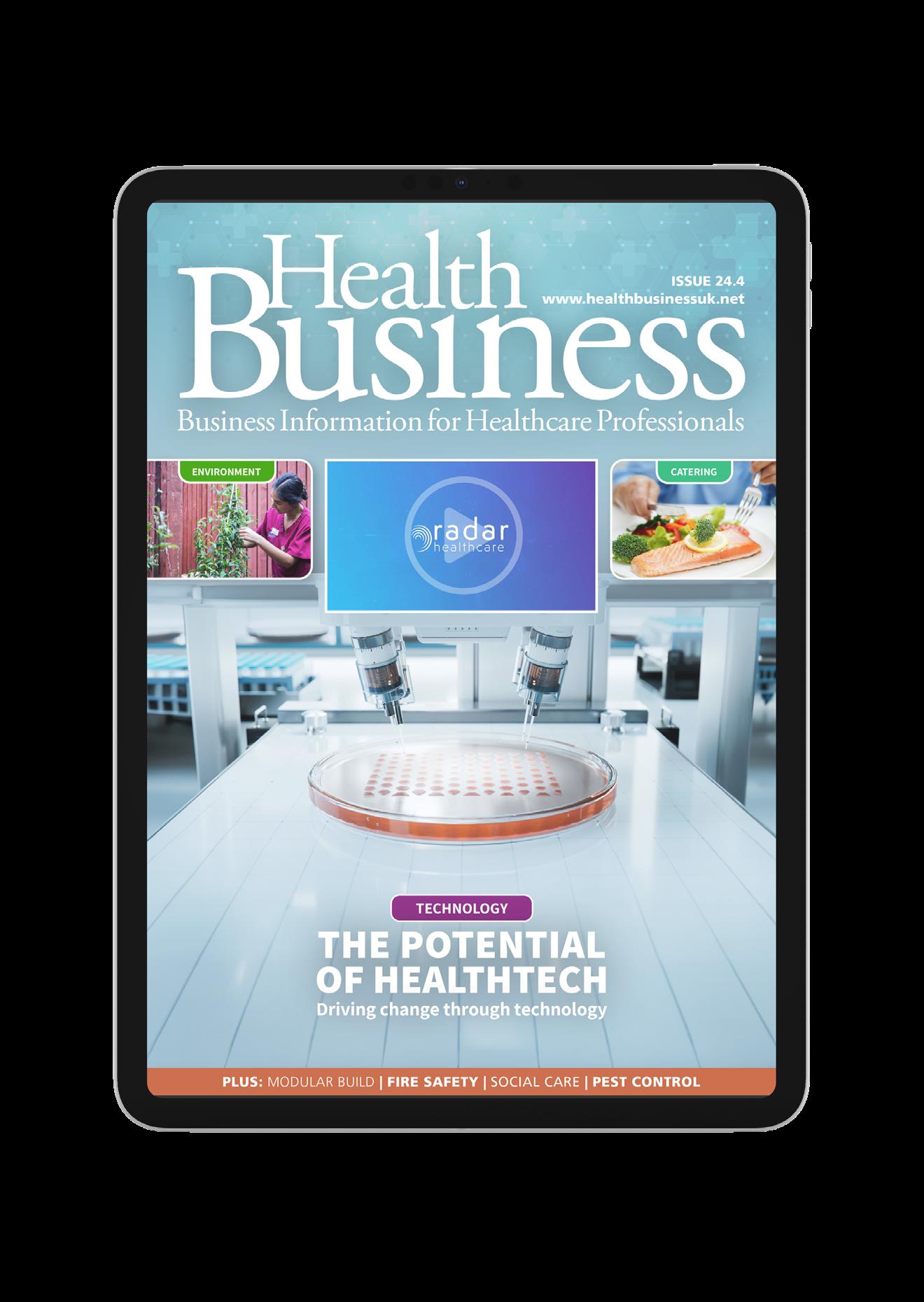


Get your fleet ready to get the job done. Equipped with smarter styling, stronger performance and safer technology, our award-winning pickup tows up to 3.5 tonnes and carries a payload of more than a tonne. Delivering the capability and durability you expect from Isuzu, this tough workhorse takes productivity to the next level. The New Isuzu D-Max is ready to go at a dealership near you.